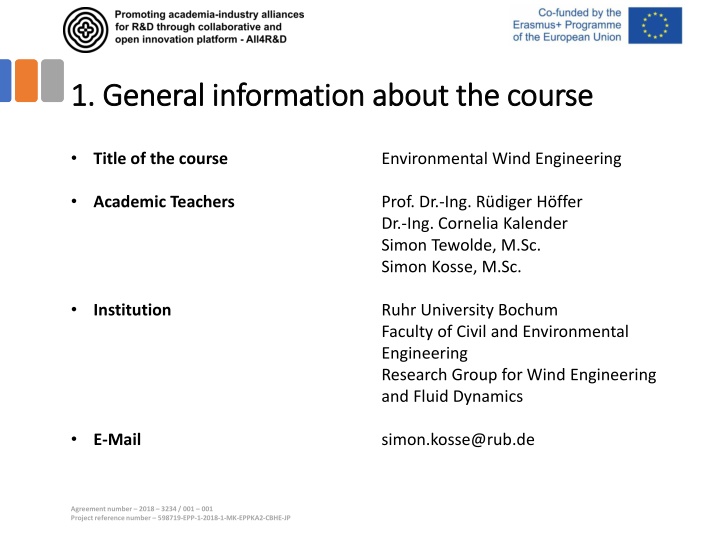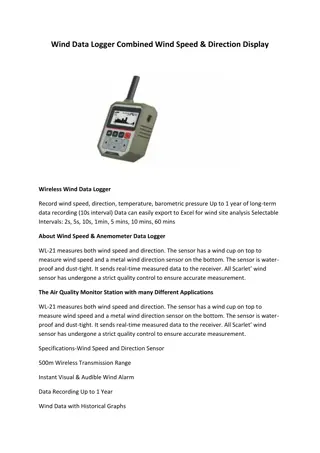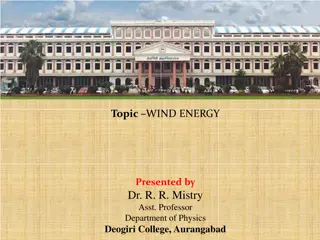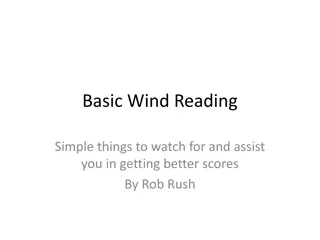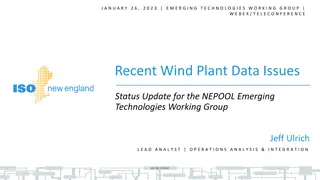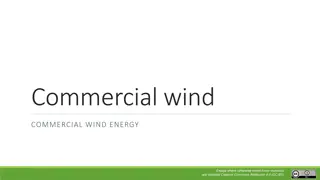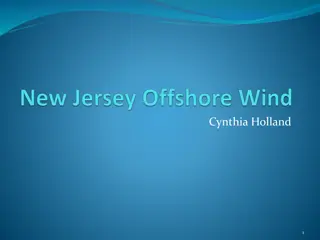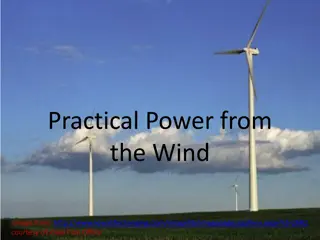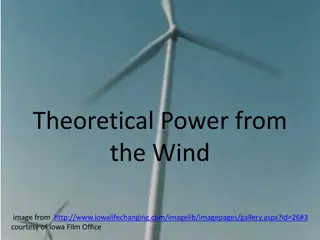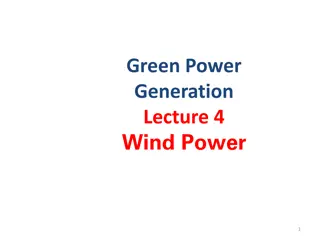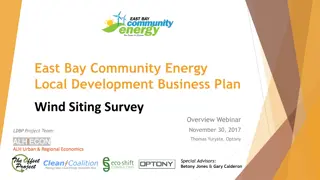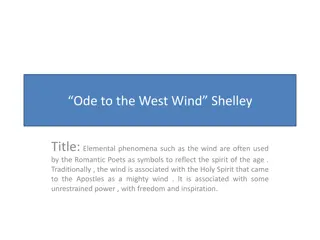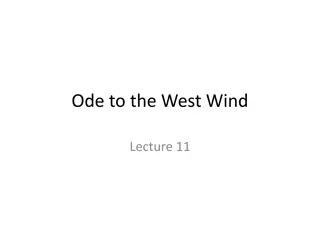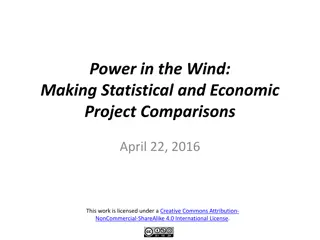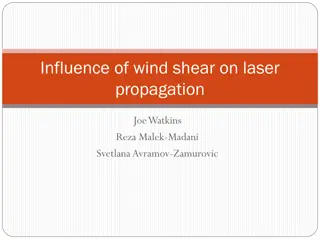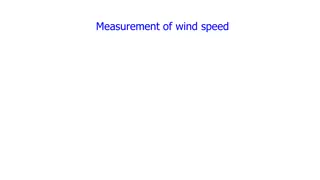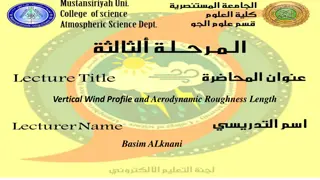Environmental Wind Engineering Course
Dive into Environmental Wind Engineering with this course covering topics such as air quality, wind energy analysis, and wind farm modeling. Suitable for engineering professionals aiming to enhance their knowledge in wind-related effects.
Download Presentation

Please find below an Image/Link to download the presentation.
The content on the website is provided AS IS for your information and personal use only. It may not be sold, licensed, or shared on other websites without obtaining consent from the author.If you encounter any issues during the download, it is possible that the publisher has removed the file from their server.
You are allowed to download the files provided on this website for personal or commercial use, subject to the condition that they are used lawfully. All files are the property of their respective owners.
The content on the website is provided AS IS for your information and personal use only. It may not be sold, licensed, or shared on other websites without obtaining consent from the author.
E N D
Presentation Transcript
1. General information 1. General information about the course about the course Title of the course Environmental Wind Engineering Academic Teachers Prof. Dr.-Ing. R diger H ffer Dr.-Ing. Cornelia Kalender Simon Tewolde, M.Sc. Simon Kosse, M.Sc. Institution Ruhr University Bochum Faculty of Civil and Environmental Engineering Research Group for Wind Engineering and Fluid Dynamics E-Mail simon.kosse@rub.de Agreement number 2018 3234 / 001 001 Project reference number 598719-EPP-1-2018-1-MK-EPPKA2-CBHE-JP
2. Description of the course 2. Description of the course Part 1 Air Quality: Air pollutants, their impact chain in the environment and legal basis in the EU Mathematical description of wind and the transport processes in air and their implementation in different dispersion models Model choice, quality assurance, validation and evaluation of model results Example of practical application of dispersion models Part 2 Wind Energy: Wind as a resource Analysis of wind ensembles by Weibull distributions Turbine efficiencies and power yield calculation Design and verification of main components Modelling of wind farms (Onshore & Offshore) Agreement number 2018 3234 / 001 001 Project reference number 598719-EPP-1-2018-1-MK-EPPKA2-CBHE-JP
3. Target group and prerequisites 3. Target group and prerequisites Target group/Learners profile The course aims at interested learners, also professionals active in public and technology sectors, who have knowledge in the field of descriptive statistics and mechanics including fluid mechanics as well as educated knowledge in the field of engineering. Prerequisites (required pre-knowledge and experiences) It is recommended that the interested learner carries a Bachelor's degree in engineering or equivalent. Agreement number 2018 3234 / 001 001 Project reference number 598719-EPP-1-2018-1-MK-EPPKA2-CBHE-JP
4. Learning outcomes 4. Learning outcomes The participants will be able: to identify and assess wind related effects on air quality in the built environment; to choose suitable strategies for the optimization of wind energy harvesting and for controlling impacts on the structures The participant will recapitulate information about the validation the quality of engineering models using measurement data from model and real experiments, and classify criteria to properly assess engineering decisions based on the nature of the wind effects under consideration and the quality of the engineering model and the suitability of the approach. The participants will be able to work in an international group in order to train their management, presentation and language skills. Agreement number 2018 3234 / 001 001 Project reference number 598719-EPP-1-2018-1-MK-EPPKA2-CBHE-JP
5. Training and learning methods 5. Training and learning methods Podcasts and exercise-based self-learning (ca. 50h in total) Synchronous digital teaching following the inverted classroom method (ca. 10h in total) The above program is valid for the release of two credits (2 ECTS) Mandatory for the allocation of one additional credit (1 ECTS) is the participation to a tailored Virtual Exchange program in international learner s groups of ca. 20h-30h Agreement number 2018 3234 / 001 001 Project reference number 598719-EPP-1-2018-1-MK-EPPKA2-CBHE-JP
Virtual Exchange Virtual Exchange Virtual exchanges are technology-enabled, sustained, people-to-people education programs. (http://virtualexchangecoalition.org) The implementation of this activity to the All4R&D course program will be generally digital, covers approx. 30h in 4-6 weeks, includes synchronous sessions, builds on mixed (international) learner s groups who deliver input after their own viewpoint of technical culture to the group work, be mandatory for the allocation of credits (3 ECTS). The teachers and their support teams work together to develop: shared learning outcomes a syllabus for this new international component With a focus on the development of activities that promote: interaction during synchronous sessions collaboration between students Agreement number 2018 3234 / 001 001 Project reference number 598719-EPP-1-2018-1-MK-EPPKA2-CBHE-JP
